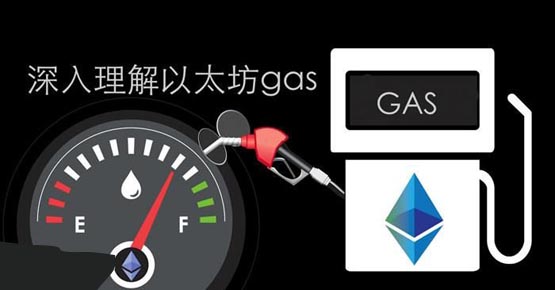One article to understand blockchain gas fees
- PHPzforward
- 2024-02-26 09:55:05702browse
php editor Banana will give you an article to understand the blockchain gas fee. In blockchain transactions, gas fees refer to the handling fees paid to miners to ensure that transactions are packaged into the blockchain. The gas fee depends on the degree of network congestion and transaction complexity. Users can adjust the gas fee according to their needs. Understanding the gas fee calculation method and influencing factors will help optimize the transaction experience and improve the transaction success rate. Next, let’s delve into the relevant knowledge of Gas fees to help you better understand blockchain transactions.

What is blockchain gas fee?
On the Ethereum blockchain, gas is a unit used to measure the computational effort required to perform a specific operation. This name was not chosen randomly. Gas is similar to gasoline. Gasoline provides energy for cars to ensure normal driving. In the Ethereum network, gas provides "fuel" for transaction behavior, allowing users to perform various operations.
Every operation on the Ethereum blockchain, or more precisely on the Ethereum Virtual Machine (EVM), incurs a corresponding gas cost. For example, performing an addition operation requires 3 gas; querying the account balance requires 400 gas; sending a transaction requires 21,000 gas. These gas costs are to ensure the normal operation of the network and prevent malicious behavior. Therefore, users need to consider the corresponding gas costs when performing any operations to ensure that their transactions can be successfully packaged and executed.
Smart contracts usually include multiple operations, which can even cost hundreds of thousands of gas in total.
Interestingly, the gas price does not directly determine the actual cost of the transaction. We need to multiply the amount of gas by the gas price to get the total cost of the transaction.
The price unit of gas is gwei, and the unit of gwei is smaller than ether. 1 gwei is equal to 0.000000001 ETH. We can think of the relationship between them as cents and dollars.
Causes for gas fee changes
Gas fees will rise and fall for the following reasons:
1. Ethereum increases the block gas limit. Every time Ethereum increases the block gas limit, the gas fee will decrease;
2. The Ethereum chain is very prosperous. Gas fees are affected by the needs of the blockchain. In order to package your transactions as quickly as possible, you need more gas fees. A large number of transactions are competing, and miners give priority to transactions with the highest gas prices. Therefore, as activity on the Ethereum blockchain increases, gas usage will also increase. The increase in gas fees indicates that there is active activity on the Ethereum chain, and users are increasing their gas fees to complete transactions.
3. The Ethereum chain is getting more and more congested. The fundamental reason for the increase in Gas fees is that the Ethereum network utilization rate continues to increase and is in a state of severe congestion. Ethereum network utilization is increasing because user activity is too active, but it is also becoming increasingly congested. For example, if a famous project on Ethereum is launched and triggers a rush to buy, gas fees will skyrocket instantly. At around 0:00 on August 20 this year, the Ethereum gas fee instantly soared to more than 2,400 Gwei. This was because the release of an NFT project called "0n1Force" triggered a rush to buy.
The above is the detailed content of One article to understand blockchain gas fees. For more information, please follow other related articles on the PHP Chinese website!
Related articles
See more- How to implement Bitcoin address in Node.Js
- Can blockchain only use Go language?
- A quick look at blockchain technology: Is it just Bitcoin?
- Domestic formal virtual currency trading platform Top ten formal exchange apps ranking
- Cryptocurrency trading platform with the lowest fees Top 10 Cryptocurrency Trading Platforms

